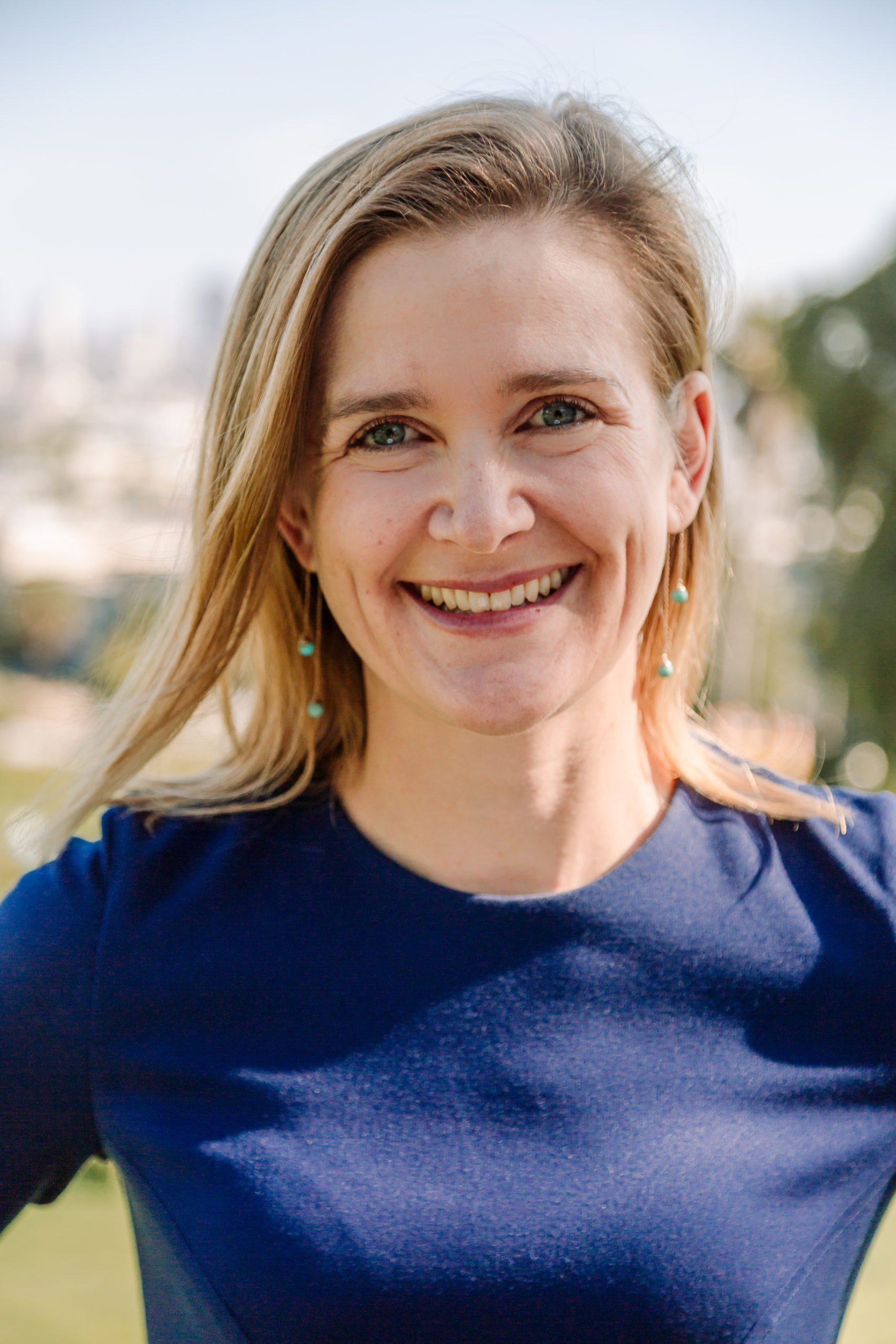This FUSE-produced story was originally published on Route Fifty.
For nearly three decades, Rodolfo Sorto Aldana and Karen Sorto have lived in the same six-unit walk-up in San Francisco’s Mission District. Karen, who is from El Salvador, had traveled northward as a teenager to study in the U.S. Rodolfo followed soon after, and the two were married. Now in their sixties, they are part of a rich community of immigrants who have helped make the Mission one of the most sought-after neighborhoods in the Bay.
A couple of years ago, the Sortos received a notice from the building’s owner informing them of the property’s impending sale to a private buyer. The sale would subject the couple’s rent-controlled apartment to market rates, some of the highest in the nation. In this once working-class Latino neighborhood, those rates now exceed $4500 a month for a two-bedroom apartment — far more than the Sortos could afford. The sale would likely have forced the couple out of their home, a scenario that plays out regularly in the intense housing market.

But something else happened instead. Shortly after the sale was posted, a newly launched nonprofit called the San Francisco Housing Accelerator Fund (SFHAF) was able to make a $3.3 million bridge loan to the Mission Economic Development Agency (MEDA), an affordable housing developer. The loan allowed MEDA to buy the building, complete limited construction, and construct a new accessory dwelling unit in the building’s garage, according to Rebecca Foster, executive director of SFHAF and a former FUSE fellow in the San Francisco Mayor’s Office of Civic Innovation. Through the SFHAF loan and MEDA’s acquisition, the building will be stabilized at a permanently affordable rent level.
SFHAF, a public-private partnership, is a San Francisco initiative taking root in a region that is desperately in need of affordable housing. The accelerator fund was first incubated in the Mayor’s Office and was spun out as an independent nonprofit in 2017 with the help of a $10 million loan from the city. SFHAF’s goal: to provide swift and flexible capital to nonprofit developers to preserve and expand the city’s supply of affordable housing.
“We are the bridge lender to help compete in this crazy market to buy at-risk buildings, get the site control, and rehab or build the new unit,” Foster said. “What we do is help affordable housing developers compete against other buyers so that they can close in 60 days and get sites that they wouldn’t otherwise be able to get if they’re waiting for the city to, say, issue a bond.”
We are the bridge lender to help affordable housing developers compete in this crazy market. — Rebecca Foster, executive director of SFHAF and FUSE fellow alum
The idea for SFHAF emerged from the Mayor’s 2014 Housing Working Group, which Foster participated in while working with the city. The group had identified key process and financing bottlenecks that limited the city’s ability to quickly expand affordable housing. In high-cost cities such as San Francisco, developers who want to build affordable housing almost always need some form of external financing assistance to cover the costs of acquisition and construction. Historically, that support has come from the government in the form of low-income housing tax credits, housing bonds, or direct subsidies. “The total development cost for a new unit of affordable housing is between $700,000 and $900,000 a unit,” Foster said. “The subsidy component of that just from the local government could be between $200,000 and $400,000 a unit.”
But to secure those funds, mission-oriented developers have to go through a lengthy engagement process. “From acquiring a site for the construction of future affordable housing to actually handing someone the keys to move into their new unit, that process can take up to seven years,” Foster said.
Private developers who can charge market rents don’t have to rely on public sources of financing to subsidize long-term costs, so they can move more quickly to close deals. Foster, who had worked for years in the financial sector, was able to draw on her experience to structure a fund that could help affordable housing developers secure property more quickly, complete early stage rehabilitation, and add much-needed units of housing to existing buildings. Once the property is secured and preliminary construction repairs are completed, the city steps in to take over the long-term financing.
“We’re waiting in the wings,” said Kate Hartley, director of the Mayor’s Office of Housing and Community Development. “We come in after a few years and pay SFHAF back, and then they recycle that money to use for the next project. If we weren’t there to provide our lower-cost funding, then the whole structure wouldn’t work, because long-term, below-market capital is the key to affordable housing in San Francisco, and that typically comes from government.”
So far, SFHAF has deployed $90 million of capital to secure 402 affordable homes in San Francisco. Other initiatives are taking cross-sectoral approaches to solving the housing crisis in the Bay Area as well. The newly launched Partnership for the Bay’s Future, for example, includes the Chan Zuckerberg Initiative, the San Francisco Foundation, and eight other community foundations and private companies. Launched in January 2019, the Partnership differs from SFHAF in that it’s regional — it operates in San Francisco, San Mateo, Santa Clara, Alameda, and Contra Costa counties — and has no structural connection to the government.
Any city that wants to build more affordable housing first has to identify potential barriers. Is it a lack of significant subsidy available to invest? Is it a lack of developer capacity? Is it bureaucracy? — Kate Hartley, director of the Mayor’s Office of Housing and Community Development
The Partnership aims to address the region’s interconnected challenges of housing, transportation, and economic opportunity. Initially, it will focus on housing, notes director Georgette Bhathena, and will tackle the problem holistically with three components: a regional partnership to foster collaboration among the private sector, the public sector, and impacted communities; an investment fund focused on increasing housing supply; and a policy fund that supports policies to stem the tide of displacement and preserve and produce housing.
“The siloed approach has been insufficient to solve for the housing crisis,” Bhathena said. “Business leaders, philanthropies, community leaders, and housing advocates really have to come together if we’re going to move the agenda forward.”
It took two years of community and stakeholder engagement to get the Partnership off the ground, Bhathena notes. “We had to think carefully about what is unique about the Bay area’s housing challenges, what already exists, and who the key stakeholders are when it comes to solving for the challenge,” she said. “And then just taking the time to be intentional about solutions and how they fit within the region given what else exists.”
An understanding of the landscape is key, Hartley says. “Any city that wants to build more affordable housing first has to identify what the barriers are for them to get more affordable housing done. Is it a lack of significant subsidy, whether philanthropic or from the government, available to invest? Is it a lack of developer capacity? Is it bureaucracy?” she said. “Because these sorts of accelerator funds are not going to be helpful to solve every problem.”
For example, for a city without a steady and significant source of subsidy to invest, partnering with an accelerator fund to buy a property may not make sense. “Using a fund to tie up land isn’t going to be effective, because eventually you need the locality to provide the no- or low-cost funds to repay the bridge loan,” Hartley said. “But if you’ve got a bunch of small apartment buildings that are converting to market rate rents, and you want to preserve those as affordable housing, that could be a place where an accelerator fund can come in and really make a difference. It could potentially buy and hold the properties for three years while your annual appropriations accrue. You can then come in and take over the permanent financing with local public subsidies that keep rents affordable permanently.”
Partnering with entities from different sectors in this way can help fill gaps in the funding continuum that would be difficult to fill alone, enabling a larger stock of affordable housing than would otherwise be the case. This compounding effect might explain why the ecosystem of cross-sectoral financing partnerships has grown in tandem with the housing crisis. Other funds in the region include the recently relaunched Transit-Oriented Affordable Housing (TOAH) Fund, which was seeded with an investment from the Metropolitan Transportation Commission, and the Golden State Acquisition Fund, which received seed funding in 2013 from the California Department of Housing and Community Development. There also are a range of Community Development Financial Institutions (CDFIs).
Foster views these organizations as different pieces of a very big puzzle. “We feel like we’re additive to the ecosystem and have really good relationships with those other lenders,” said Foster. “And if we can make a project work better through collaboration, we are always eager to partner.”
To accelerate the process of developing affordable housing, cities need to analyze and leverage the strengths of each of these organizations. For Hartley, assessing the value of working with accelerator funds boils down to the details. “If private entities want to put funds together and create economic efficiencies that get more affordable housing built, then that is tremendous. We would support that all day,” she said. “The key is knowing the cost of their money, the terms, their goals, and what level of risk they are willing to undertake.”
When all of the pieces come together, residents like the Sortos, who would otherwise be driven out of their communities, benefit. The Sortos’ building doesn’t have an elevator, so the couple will soon be moving into the newly converted garage on the ground floor. “Part of the loan agreement was turning the garages into a new housing unit,” said Foster. “So, this couple will be able to grow older together in the same building they’ve lived in for 20 years.”
Rikha Sharma Rani is a Bay-area based writer and journalist. Her work has been featured in The New York Times, CityLab, Politico Magazine, and more.
[Photo Credit: Sam Ellis]
